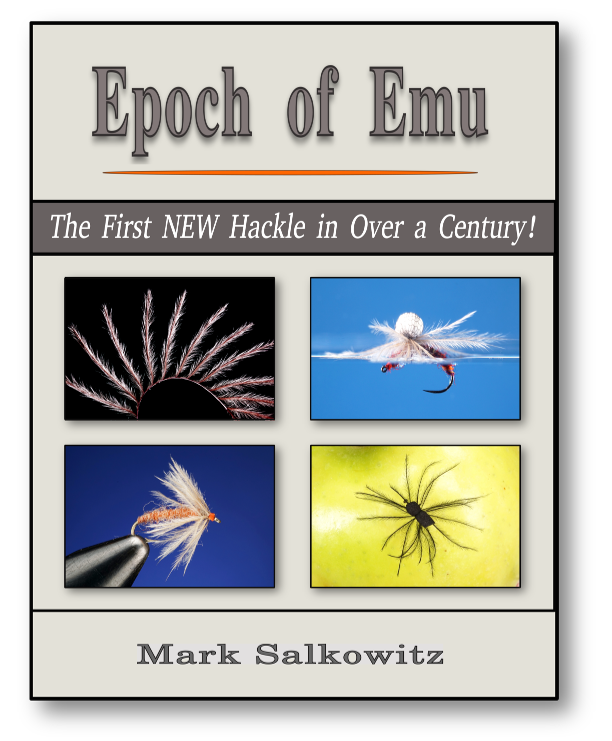|
It is with great
excitement that I introduce the most
misunderstood feather in all of fly tying.
Emu is the first new hackle in over a
century. Emu flies are at the cutting edge
of modern fly fishing.
Emu hackle is the most meaningful addition to the tyer’s chest of materials in a generation. Not since the stiff hackles of chalk stream nobility traveled to the New World, has the tyer had a new option of hackle. Emu is a disguised hackle no longer. It is a Goldilocks in the pantheon of our tying hackles. The stripped feather is like a new instrument in the hands of an old musician. With it, the tyer may compose new melodies with which to charm his cherished trout.
In the absence of an authoritative wrapping technique, emu continues to slip under the radar of trouters and authors alike. Since Quigley's article in 2005, not a single trout book or magazine references emu. Since 2012 I have been developing the transformative techniques that turn this curious feather into a masterful hackle. The Fly Tyer magazine article left out important content from the original manuscript. Not to worry, the book is coming! Thanks to tremendous reader interest and inquiries, I have decided to write the first-and-only book of its kind, “Epoch of Emu." The plague has thrown a wrench into the timeline. The book is expected to be available next autumn.  |
I
will defer to our common fly tying lexicon when
referring to parts of the feather. The vain or rahcis we
know as the stem. The barb or primary barb, I will refer
to as the fiber. And the secondary barbs, I will call
barbules.
Note that the barbules are sensitive to impurities. If they dry matted, a rinse with clean water and a puff of air will restore them. Even though the feather is very long, it should be thought of, and treated as three smaller discrete feathers. A dun does not sit on the water’s surface, he it stands on it. The trout does not see the insect’s body at the edge of the window. He sees a light-pattern, and is triggered to rise by “feet in the film.” This will be the initial appearance of a symmetrical tied with the transitional fibers. It looks exactly like an emerger breaking through the surface. Although the fly is now flush in the film, there is still small pockets of air around the wing post., exactly like the real thing. An elastic post prevents the stem from sliding up. It will also stay in contact with the stem, providing support like a shock absorber. Elasticity is the most import feature of a good wing post for parachuted emu. |




